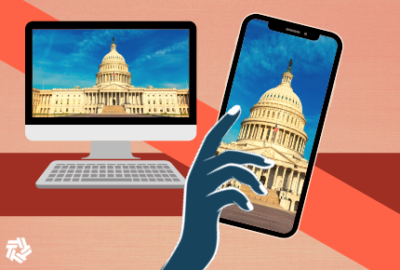Innovation for IRS customer experience hangs on cost effectiveness
Harrison Smith, co-director of the IRS Enterprise Digitalization and Case Management Office, said the agency must help industry partners understand what they wa...
A Form 1040 tax return may be worth the cost of digitization but what about a more obscure document? That may be cheaper to keep in paper form.
This is a question the IRS considers when it decides to fund innovative efforts. The agency needs to be economical as it tries to improve customer experience, as the December executive order put pressure on agencies to do. Although some might advocate making all 1,439 IRS forms digital, that may be less practical because the lifecycles of those forms vary depending on how taxpayers and businesses use them.
Harrison Smith, co-director of the IRS Enterprise Digitalization and Case Management Office, said the enterprise perspective goes back to mission, stitching together funding and policies to optimize the agency’s approach. Pilot programs can sometimes be as small as 30 days long and $25,000, which Smith described as miniscule for federal government. But if the pilot works, they can keep funding it.
“Within those pilots we keep the approach, the solution very, very broad. We try to dictate as little as possible, and simply say things like, ‘We want to be able to scan pieces of paper and create digital images. We don’t care how you do it, we don’t care the device,’” he said during a webinar hosted by GovExec on Feb. 23. He clarified that cybersecurity and taxpayer data protection requirements apply. “Show me that you can do it. Prove that you can, frankly, do the proposal that you submit, and then we’ll talk about, great, how does this fit within our architecture? How does this fit within our policy approach? How does this fit within our business processes?”
From there, IRS can continue to fund so long as the pilots continue demonstrating process and progress, Smith said. He explained that shifting them from paper to digital brings on costs such as gathering data and storing it.
At the same time, reduced reliance on paper and increased access to machine-readable data are in the IRS’ digitalization strategy. Smith said the agency must help industry partners understand what they want to accomplish.
“We in the government, I think we’ve gotten a lot better. Reverse industry days, the proliferation of industry liaison roles, these types of things. But really making sure that we’re willing to talk with our industry partners and really understand and benefit from both of us, all of really, benefit from that conversation,” he said.
He described learning the hard way why it counts to clearly communicate to industry partners. Early in his career, while leading a procurement with a 60-day bid time he brushed off questions from curious vendors in an effort to “make sure that everybody gets the same information at the same time. And so I didn’t say anything, like at all to anybody. Nope, no information,” he said. This in turn made it hard for interested partners to submit their bids as they tended to plan six-to-18 months in advance.
“Be transparent and acknowledge challenges, create partnerships, find balance and be kind, because that’s really the essence of what we do,” he said.
Olivia Peterson, AWS Federal Financial Services Leader, agreed that keeping vendors at arms length hinders trust. But she described a trend of direct engagement at the top levels that was promising.
Peterson said the unexpected financial events of the past few years show the need to respond to sudden demands. The IRS knows too well the struggle to innovate in response to new modernization needs, as the agency has was hit with compounding pressures due to the pandemic: Chronic understaffing, demand for digital services while offices were largely closed or empty, and the distribution of relief funding.
For AWS, that means speed and agility to meet the demand is key. She said they use the concept of press releases to ask themselves why a product or service should matter to end users on a basic level. Then they write an FAQ to reflect deeper on the product’s challenges or business value.
“We iterate on those processes, and actually I Iook at that across each of our customer segments too is what is the press release that we want to have around customer experience for the IRS? Let’s really ideate on that together and look at the FAQs,” she said. “And then you get into solutioning and making sure that that’s the priority and how it fits.”
Copyright © 2024 Federal News Network. All rights reserved. This website is not intended for users located within the European Economic Area.
Amelia Brust is a digital editor at Federal News Network.
Follow @abrustWFED






